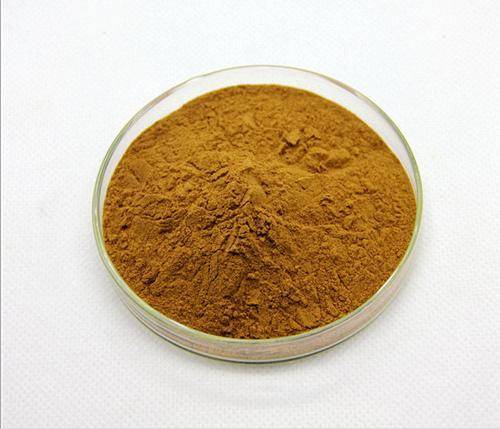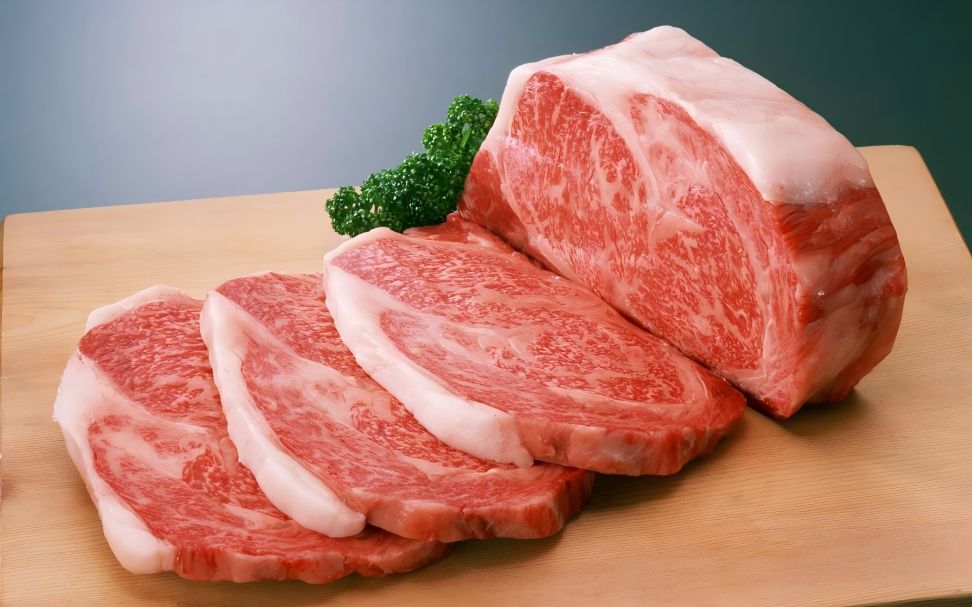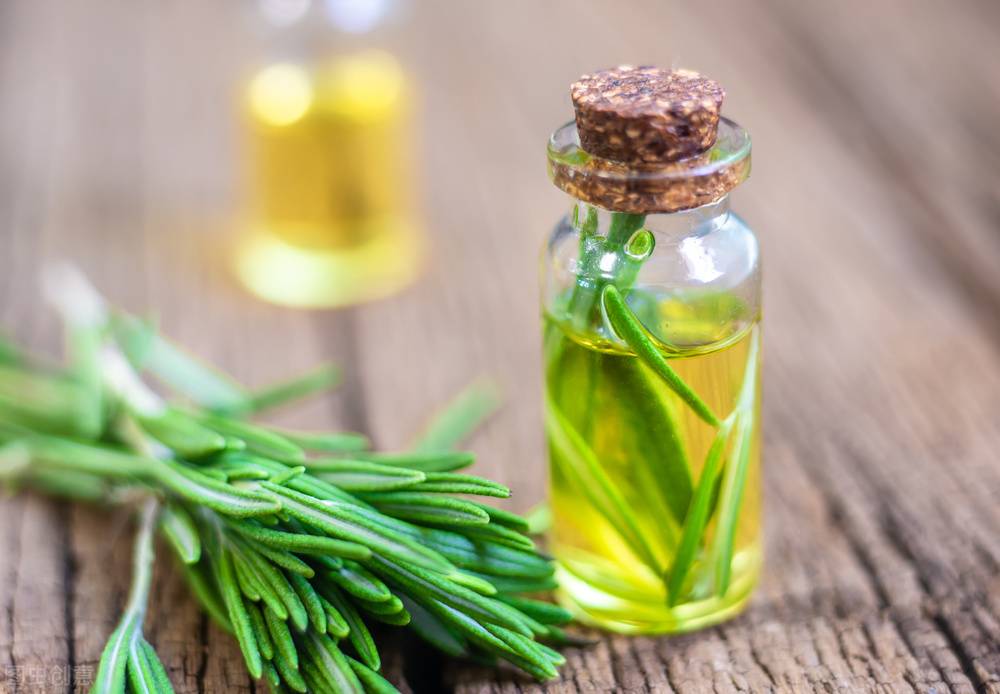How Is Rosmarinus Officinalis Extract Used in Animal Feeding?
Rosemary and rosemary extracts have been attracting attention for a long time in China and abroad because of their antioxidant, antibacterial, antitumor, anti-inflammatory, hypolipidemic and hepatoprotective functions. This paper summarizes the absorption and metabolism of rosemary extracts, their biological functions and their applications in animal production, and aims to provide theoretical basis for further promoting the application of rosemary extracts in animal production.
Rosemary (Rosmarinus oficinalis L.) is a perennial aromatic plant, shrubby, with leafy branches up to 2 m high and green leaves that give off a distinctive fragrance, belonging to the Lamiaceae family, which originated in the Mediterranean region and is now cultivated all over the world. The main production areas in China are in the south, such as Guizhou, Hunan, Yunnan and Guangxi provinces. The main compounds responsible for the biological effects of rosemary are polyphenols, which, depending on their polarity, can be divided into phenolic acids and phenolic diterpenes. The most abundant phenolic acid is rosmarinic acid, and among the phenolic diterpenes are rhamnetinic acid and rhamnol. The contents of sclareolic acid, sclareol and rosemarinic acid in rosemary leaves were 458.63, 1,554.78 and 3,154.36 μg/g, respectively [1].
In addition, the presence of other trace components (methyl sage, rosemary phenol, rosemary dialdehyde, epi-isorhizophenol, epi-rosemary phenol, and flavonoids) as well as other constituents of the essential oil (1,8- camphorol, α-pinene, or icicle) have been linked to a number of biological activities [2]. Rosemary has been widely used as a spice in cooking, as a natural preservative in the food industry, and as an ornamental and medicinal plant. The active components of rosemary have become a hot research topic due to their antioxidant, antibacterial, antitumor, anti-inflammatory, blood lipid, liver protection, and immunomodulatory properties. In this paper, the absorption and metabolism of rosemary extracts in vivo, their biological functions and their applications in animal production are summarized as follows, with a view to providing reference for further research on the application of rosemary extracts in animal production.
1 Absorption and metabolism of rosemary extract in vivo
Rosmarinic acid has been identified as one of the main components of rosemary extract, and several studies have shown that it is metabolized by intestinal microorganisms to caffeic acid and its derivatives prior to absorption, but the microorganisms and enzymes involved in this biotransformation are not clear [3-4]. Liu Shengnan et al. [5] showed that the pattern of total phenol content in the digested products of rosemary ethanol extract was as follows: an increasing trend in the simulated gastric digestion stage, probably because the bound polyphenols present in the rosemary ethanol extract were released under acidic conditions, which led to an increase in the total phenol content [6]; and a decreasing trend in the simulated intestinal digestion stage, probably because the polyphenol compounds (polyphenols) in the ethanol extract were released under acidic conditions [7]. The decreasing trend in the simulated intestinal digestion stage could be attributed to the fact that the polyphenol compounds contained in the ethanolic extract of rosemary (rosmarinic acid, rhamnolic acid, delphinidol, rhamnol, etc.) contain phenolic hydroxyl groups in their structures, which are unstable at high pH and are prone to degradation and formation of other substances, leading to a decrease in the total phenol content[7].
Pérez-Sánchez et al. [8] obtained the active compounds of rosemary extract by supercritical fluid extraction. 24 compounds (free and liposomal forms) were identified from the extract by high performance liquid chromatography-electrospray ionization-quadrupole-time-of-flight tandem mass spectrometry (HPLC-ESI-QTOF-MS) and their permeability was investigated in the Caco-2 cell monolayer model. The results showed that the flavonoids were mainly absorbed by passive diffusion transport, with thapsigargin and coriandrin having the highest permeation rates; among the diterpenoids, rhamnetinic acid, rosmarinol and its isomers epi-isorobinol and epi-rosmarinol had the highest permeation rates; and the triterpenoids had lower permeation rates than the flavonoids and the diterpenoids. Fernández-Ochoa et al. [9] studied the absorption and metabolism of compounds in rosemary extracts by in situ perfusion in mice. The results showed that the main metabolic pathway for diterpenoids is glucuronidation, which occurs via uridine diphosphate glucuronidase (UTG) in either the small intestine or the liver (phase II metabolism), and that the phenolic compounds and metabolites are absorbed into the bloodstream through the intestinal barrier. Both phenolic compounds and metabolites can be absorbed into the blood through the intestinal barrier, and rhamnosus acid has been measured to be the phenolic compound with the highest concentration in plasma.
2 Biological functions of rosemary extracts
2.1 Antioxidant effects
Among the active constituents of rosemary, diterpenoids are the main antioxidant compounds, and their antioxidant activities are roughly ranked from low to high as rosmarinol, rhamnol, rosmarinic acid, and rhamnolic acid [10]. Current studies have focused on the use of rosemary extract as a natural antioxidant to prevent the oxidation of fats and oils and to maintain the flavor of livestock and poultry meat. The mechanism by which rosemary extract attenuates fat oxidation during meat storage is that rosemary extract interacts with lipid membranes, i.e., rosemary extract contains molecules related to lipid membranes, and prevents the propagation of hydrophilic radicals that induce fat oxidation in bilayer membranes by altering the fluidity of the membranes or scavenging free radicals, thus exerting an antilipid oxidative effect[11].
Zheng Qiuluo et al [ 12 ] test showed that, rosemary extract has antioxidant effect on glycerol trioleate, and its mechanism of action may be that the rosemary extracts ( rhamnosus acid, rhamnol and rosemary phenol ) have stabilizing and protecting effect on the tertiary hydrogen structure in the olester molecule. Liu Fengxia et al. [13] showed that the antioxidant activity of rosemary fat-soluble extract (rhamnosus acid + rhamnol) in gardenia oil was superior to that of chemically synthesized antioxidant [butylated hydroxyanisole (BHA) + 2,6- di-tert-butyl hydroxyanisole (BHT)], which provides a new way for the development of new oil antioxidants.
Gao et al. [14] showed that the addition of 1% rosemary extract to minced chicken breast meat could reduce the population of CMBD and slow down the oxidation of lipids during frozen storage [15-16]. Zhang Zhibi et al. [17] administered different doses of rosemary extract to mice by gavage, and the results showed that 400 mg/(kg -d) significantly increased the activities of glutathione peroxidase (GSH-Px) and superoxide dismutase (SOD) in the liver and significantly increased the activity of glutathione peroxidase (GPG) and superoxide dismutase (SOD) in the liver by up-regulating the peroxisome proliferator-activated receptor alpha (PPARα) and down-regulating reactive oxygen species (ROS) synthetic gene-mediated protein (ROS) synthesis in alcohol metabolism [15-16]. By up-regulating peroxisome proliferator-activated receptor α (PPARα) and down-regulating the expression of cytochrome P450 2E1 (CYP2E1), which is a ROS synthetic gene, the concentration of malondialdehyde (MDA) was lowered, and alcohol-induced hepatic oxidative damage was alleviated.

2.2 Bacteriostatic effect
Rosemary extract is effective in controlling microorganisms that infect the oral cavity and other parts of the body, such as Candida albicans, Staphylococcus aureus, Enterococcus faecalis, Streptococcus pyogenes and Pseudomonas aeruginosa [18]. The antimicrobial effects of rosemary extracts are related to their specific phenolic composition, and the antimicrobial effects of phenolic compounds are related to the inactivation of intracellular enzymes, which depends on the rate of penetration of substances into the cell or caused by changes in the permeability of cell membranes; the mechanism of action of terpenes is not fully understood, and it may be that they are involved in the disruption of membranes by lipophilic compounds; rhamnosus acid and rosmarinic acid are the main active components of the antimicrobial effects in the extracts of rosemary [19]. and rosmarinic acid may be the main active ingredients in the antibacterial effect of rosemary extracts [19].
Sacco et al. [20] evaluated the bacteriostatic effects of three ethanolic extracts of rosemary (with different phenolic components) on Gram-negative (E. coli, Pseudomonas aeruginosa) and Gram-positive bacteria (Staphylococcus epidermidis, Staphylococcus aureus) using the broth dilution method, and the results showed that all the three ethanolic extracts of rosemary with different phenolic components had strong bacteriostatic effects on E. coli, with the minimum bactericidal concentration (MBC) <0.07 mg/mL, and poorer inhibition on Pseudomonas aeruginosa (MBC about 0.20 mg/mL). The results showed that all the three different phenolic compositions of rosemary ethanol extracts tested had strong bacteriostatic effects on E. coli, with the minimum bactericidal concentration (MBC) <0.07 mg/mL, while the inhibitory effect on Pseudomonas aeruginosa was poorer (MBC about 0.20 mg/mL); the key of the inhibitory effect was the non-volatile terpenoids in the extracts of rosemary, and the higher the content of terpenoids in the extracts of rosemary, the better the inhibitory effect, which was not related to the flavonoids in the leaves of rosemary.
Ekambaram et al. [21] showed that the minimum inhibitory concentrations (MICs) of rosemary extract against Staphylococcus aureus (S. aureus) and methicillin-resistant S. aureus (MRSA) were 0.8 and 10.0 mg/mL, respectively, and that MSCRAMM (microbial surface com- ponents recognizing adhesive matrix molecules), a major virulence factor present in bacterial surface membrane proteins, might be associated with its antibacterial activity against MSCRAMM and MRSA surface proteins. MSCRAMM (microbial surface com- ponents recognizing adhesive matrix molecules) is a major virulence factor present in bacterial surface membrane proteins, and the antimicrobial activity of the extract may be related to its inhibitory effect on the expression of MSCRAMM on the surface proteins of Staphylococcus aureus and MRSA. Jeong et al. [22] showed that methyl ester of rosemary acid (a lipophilic derivative of rosemarinic acid) was more effective against Escherichia coli by enhancing the inhibition of the hypoxia-inducible factor, prolyl hydroxylase-2 (HPH), and by activating the hypoxia-inducible factor-1-vascular endothelial growth factor (HIF-1-VEGF) pathway.
2.3 Anti-tumor effects
Rosemary extract has shown many different antitumor effects in various cancer types (colon, breast, stomach, etc.), and the main antitumor components have been attributed to rhamnoside, rhamnol, ursolic acid, and rosmarinic acid [23]. The effect of the complete extract of rosemary is usually better, probably due to the combination of known bioactive compounds present in the complete extract, as well as the presence of other active antitumor components that have not yet been demonstrated.González-Vallinas et al. [24] showed that the antitumor effect of rosemary extracts was observed in colon and pancreatic cancers, and that the effect of the complete extract was superior to that of the complete extract alone. González-Vallinas et al. [24] showed that rosemary extract had antitumor effects on both colon and pancreatic cancers, and that the effect of the whole extract was superior to that of silymarin and silybin alone. The mechanism of antitumor effect may be that silymarin enhances the activity of glucosaminoglycosyltransferase 3 (GCNT3), which is known to have oncolytic activity in colon cancer.
Cao Shujian et al. [25] showed that the components of rosemary extracts with significant inhibitory effects on breast cancer cells were silymarin and rosemarinol, and the former had a selective inhibitory effect on cell proliferation, as shown by its inhibitory effect on the proliferation of breast cancer cells was much greater than that on the normal breast cells, while the latter did not have a selective inhibitory effect. However, Xu et al. [26] found that rosmarinic acid inhibited human bone-conducted migration of MDA-MB- 231BO in breast cancer cells mainly through activation of the RANKL-RANK-OPG pathway, a pathway that regulates bone metabolism, and inhibition of leukocyte interleukin-8 (IL-8) expression. 231BO.
Li Wanting et al. [27] found that rosemary analog-11 (RAA-11) may inhibit the proliferation and induce the apoptosis of human gastric cancer cells MGC-803 by inhibiting the extracellular signal-regulated kinase/mitogen-activated protease kinase (ERK/MAPK) pathway, and Ishida et al. [28] showed that sageol contained in rosemary induced apoptosis in adult T-cell leukemia/lymphoma (ATL) cells. Ishida et al. [28] showed that sageol contained in rosemary induced apoptosis in adult T-cell leukemia/lymphoma (ATL) cells, and the expression of enzymes in the glycolytic pathway of reductase and pentose phosphate pathway was increased in the ATL cells treated with sageol. Glutathione is central to the maintenance of intracellular oxygenation and reduction, and the decrease in the content of intracellular glutathione caused by sageol suggests that the apoptosis induced by sageol is due to glutathione depletion in the ATL cells.
2.4 Other roles
Rosemary extract also has anti-inflammatory, lipid-improving, hepatoprotective, and immunomodulatory effects. Yao Yang et al. [29] showed that rosemarinic acid accelerated mucosal repair by lowering the levels of intrinsic inflammatory cells, interleukin-1β (IL-1β), interleukin-18 (IL-18), and inflammatory cell 3 (NLRP3), and thus enabled the oral ulcers of the rats to heal and close. According to Selmi et al [30], the essential oil of rosemary has a protective effect on tetracosactide-induced hyperglycemia. Zhao et al [31] investigated the preventive effect of Salvia divinorum on high-fat diet-induced obesity and metabolic syndrome in mice, and the results showed that, compared with the control group and the group on a high-fat diet, the Salvia divinorum-supplemented group significantly reduced body weight gain, fat percentage, plasma glutamic transferase (ALT) and aspartic acid (ASA), and the fat percentage in the mice. The effects of the rhamnosus acid supplementation on body weight gain, fat percentage, plasma GLT (ALT), AST (aspartate aminotransferase) activity and glucose, insulin, liver weight, liver triglyceride and free fatty acid content were significantly reduced in the mice compared with the control and high-fat diet groups.
Raskovic et al. [32] showed that rosemary essential oil inhibited cell membrane damage by limiting the extent of lipid peroxidation and alleviated the symptoms of carbon tetrachloride-induced hepatotoxicity in rats by activating the physiological defense mechanism, and Vaquero et al. [33] demonstrated that long-term administration of rosemary-rich food to rats slowed down the body weight gain and improved the blood lipid level, probably due to the significant inhibition of lipase in the rat stomach, leading to a decrease in fat absorption. This may be due to the significant inhibitory effect of rosemary extract on the lipase enzyme in the stomach of rats, leading to a decrease in fat absorption. The immunosuppressive effect of rosemary extract is mainly attributed to the induction of apoptosis by trans-caffeic acid through the inhibition of the transducer and activator of transcription 3 (STAT3), but not nuclear factor-κB (NF-κB) and extracellularly regulated protein kinase (ERK1/2) pathways in T and B cells, and the inhibition of proliferation of human lymphocytes and CD4+ T cells [34].
3 Application of rosemary extracts in animal production
3.1 Applied research in chicken production
Rosemary extract can improve the performance of broiler chickens, reduce the negative effects of heat stress on laying hens and improve egg quality. Mathlouthi et al. [35] showed that the addition of 100 mg/kg of rosemary essential oil to the feed ration could significantly increase the body weight and full-term daily weight gain of broilers, and significantly reduce the feed-to-weight ratio. Liu Yannan et al. [36] showed that the total antioxidant capacity (T-AOC) of serum of Jinghai yellow chickens was significantly increased by the addition of 200 mg/kg of fat-soluble rosemary extract to the feed ration.
Li Aihua [37] showed that the addition of different combinations (water-soluble, fat-soluble) or different ratios of rosemary extract to the diets of Jinghai yellow chickens had no significant effect on the number of cecum microorganisms (Escherichia coli, aerobic bacteria, etc.). Lv Ling [38] showed that the addition of different levels of dried rosemary leaves or essential oils to broiler chicks' diets improved the quality of chicken meat and significantly affected the body weight gain, feed conversion rate and carcassing rate of broilers, and that the addition of dried rosemary leaves had a smaller effect on the productivity of broilers than did the addition of rosemary essential oils.
Wang et al. [39] found that the addition of 0.6% rosemary grass powder to the diet of laying hens reduced the expression of heat stress protein 70 (HSP70) in the ovary, uterus, heart, lungs and kidneys, and increased the expression of lysozyme (LYZ) in the ovary, isthmus, heart, liver, spleen, lungs, small intestine, and glandular stomach, which reduced the negative effects of heat stress on the performance of laying hens and prolonged the egg storage time. This reduces the negative effects of heat stress on the performance of laying hens and prolongs the storage time of eggs. Yang Jiansheng et al. [40] added different levels (0.3%, 0.6%, 0.9%) of rosemary grass powder to the diets of laying hens, and the results showed that the optimal level of addition was 0.3%, and compared with the control group, the serum albumin (ALB), the average daily total egg weight, and the laying rate of the chickens were all significantly increased.

3.2 Applied research in other animal production
De Oliveira et al. [41] added 4 g/(head-d) of rosemary essential oil to the diet of heifers (73 d), and the pH, fat thickness, marbling, muscle area, and water loss (thawing and dripping) of the longissimus dorsi muscle of the test group were not significantly different from those of the control group at 24 h after slaughter; however, the addition of rosemary essential oil significantly reduced the cooking loss, color, texture, and lipid oxidation of the meat at 14 d of aging. However, the addition of rosemary essential oil had a significant effect on cooking loss, color, texture and lipid oxidation of aged (14 d) meat, significantly reducing lipid oxidation and color loss. The results showed that the average daily weight gain of the RR group was higher than that of the control group, with no significant differences in carcass composition of muscle, fat, skeletal tissue and shoulder and leg parts, similar weights of bony organs and intestines, and similar weights of functional tissues (skin, liver, organs). (There were no significant differences in carcass composition at the shoulder and leg sites, similar weights of bony organs and intestines, increased weights of functional tissues (skin, liver, kidneys, and testes), similar final muscle pH, cooking losses, and color variables, and no significant differences in the chemical composition of muscle (protein, fat, myoglobin, collagen, and iron).
These results revealed the possibility of using RR for fattening lambs without negatively affecting carcass and meat characteristics [42]. Liotta et al. [43] supplemented the diet with 1 g/kg of rosemary extract based on 3% of the live weight of Nigerian Scythian pigs [(33.5±6.0) kg] during the fattening period and showed that rosemary extract significantly increased the levels of polyunsaturated fatty acids (18:2n6, 20:4n6, 22:6n-3) and the indices of arterial congealed stiffness and thrombogenicity of the pig. The results showed that the extract of rosemary significantly increased the content of polyunsaturated fatty acids (18:2n-6, 20:4n-6, 22:6n-3) in pork, while the indices of aortic atherosclerosis and thrombosis were slightly different from those of the control group. Dieffenbacher's extract is a new therapeutic agent for the prevention of streptococcal disease and mononuclear cell infections in fish, and Zoral et al. [44] showed nuclear consolidation and hepatocyte atrophy in carp fed a diet supplemented with 200 mL/kg of aqueous extracts of rosemary for 20 d. Fish fed a diet supplemented with 400 mL/kg of aqueous extracts of rosemary showed pathological changes in the kidneys (cytoplasmic vesicles in kidneys, leading to a decrease in renal function), as well as a decrease in the number of cytoplasmic vesicles. The test fish fed 400 mL/kg rosemary aqueous extract showed some pathological changes in the kidneys (cytoplasmic vesicles in the kidneys, leading to tubular necrosis); AST activity increased in a dose-dependent manner; and the blood level of 1,8-cineole reached a peak at 60 min after feeding 800 mL/kg rosemary aqueous extract [(117.9 ± 3.5) ng/mL], with an elimination half-life (T1/2) of 248 min. The results showed that rosemary aqueous extract could cause liver and kidney damage in carp at high doses, and further studies are needed to determine the appropriate dose for oral treatment of parasitic diseases.

4 Summary
In summary, rosemary extracts have a variety of biological effects, such as antioxidant, antibacterial, antitumor, etc., and have good application value in animal production. However, the application of rosemary extracts in animal production is not common at present, mainly due to the following reasons: the active ingredients obtained by different extraction methods vary greatly; there is no uniform and mature extraction process; the biological function mechanism of the active ingredients has not yet been studied clearly; and the appropriate dosages that should be added to the extracts at different stages of the growth of different animals are not clear. In future research, we should focus on the reduction of feed-to-weight ratio, antioxidant level and improvement of meat quality, so that rosemary extracts can be better used in the production of non-resistant breeding animals.
References:
[1] XU Yifan, LIU Pu, LIU Peipei, et al. Determination of 11 antioxidant activity components in rosemary stems and leaves by HPLC-DAD method[ J]. Chinese herbal medicine, 2018, 49(9):2153-2157.
[ 2 ] DE OLIVEIRA J R , CAMARGO S E A , DE OL- IVEIRA L D. Rosmarinus oficinalis L. (rosmarinus) as therapeutic and prophylactic agent [J]. journal of Bio- medical Science, 2019, 26:5.
[3] BEL-RHLID R, CRESPY V, PAGÉ-ZOERKLER N, et al. Hydrolysis of rosmarinic acid from rosemary ex- tract with esterases and Lactobacillus johnsonii in vitro and in a gastrointestinal model [J]. vitro and in a gastrointestinal model[ J]. Journal of Agricul- tural & Food Chemistry, 2009, 57(17):7700-7705.
[ 4] LAFAY S, GIL-IZQUIERDO A. Bioavailability of phenolic acids[ J]. Phytochemistry Reviews, 2008, 7 (2): 301-311.
[5] Liu Shengnan, Yu Minmin, Pan Jingjing, et al. Study on the change rule of total phenols and antioxidant activity of rosemary extract during simulated gastrointestinal digestion [ J/ OL ]. Food Industry Science and Technology: 1-9 [2019-09-12].
[6] Liu Guoyan, Zhang Jie, Xu Xin, et al. Effect of in vitro digestion on the content and anti-oxidative stress capacity of celery flavonoid mixtures and monomers [ J ]. Food Science , 2018, 39 (18): 8-14.
[7] SVEDSTRÖM U, VUORELA H, KOSTIAINEN R, et al. Fractionation of polyphenols in hawthorn into poly- meric procyanidins, phenolic acids and flavonoids pri- or to high-performance liquid chromatographic analy- sis [J]. pri- or to high-performance liquid chromatographic analy- sis[ J]. Journal of Chromatography A, 2006, 1112(1/ 2): 103-111.
[ 8 ] PÉREZ-SÁNCHEZ A , PÉREZ-SÁNCHEZ I , BARRAJÓN-CATALÁN E et al. Evaluation of the in-testinal permeability of rosemary (Rosmarinus ofici- nalis L.) extract polyphenols and terpenoids in Caco-2 cell monolayers [ J ].PLoS One, 2017 , 12 ( 2 ): e172063.
[9] FERNÁNDEZ-OCHOA Á , BORRÁS-LINARES I, PÉREZ-SÁNCHEZ A, et al. Phenolic compounds in rosemary as potential source of bioactive compounds against colorectal cancer: in situ absorption and metab- olism study[ J].Journal of Functional Foods, 2017, 33: 202-210.
[ 10] Zhou Huiling, Liang Wanxian, Xu Daoli, et al. Progress of pharmacological effects of active extracts of rosemary[ J]. Global Chinese Medicine, 2015, 8(12): 1542-1545.
[ 11] FADEL O, EL KIRAT K, MORANDAT S. The natural antioxidant rosmarinic acid spontaneously pene- trates membranes to inhibit lipid peroxidation in situ. [J]. Biochimica et Biophysica Acta: Biomembranes, 2011, 1808 (12): 2973-2980.
[ 12] Zheng Qiuluo, Fan Jingjing. Research on the main components of rosemary extract and its antioxidant effects [ J ]. Experimental Technology and Management , 2017, 34(8): 43-46.
[ 13] Liu Fengxia, Wang Ying, Xue Gang, et al. Study on antioxidant property of rosemary fat-soluble extract in gardenia oil [ J ]. China Oil and Fats , 2019, 44(1): 101-104.
[ 14] GAO Y, ZHUANG H, YEH H Y, et al. Effect of rosemary extract on microbial growth, pH, color, and lipid oxidation in cold plasma-processed ground chicken patties[ J].Innovative Food Science &Emerging Tech- nologies, 2019, 57:102168.
[ 15] Lu Qing, Huang Jichao, Zhu Zongshuai, et al. Response surface methodology to optimize the process of natural antioxidants to inhibit discoloration and lipid oxidation in seasoned chicken fillet [ J ]. Food Science , 2019, 40(6): 296-303.
[ 16] Jia Na, Guo Qian, Song Li, et al. Effect of rosemary extraction on quality characteristics of minced chicken meat during cold storage[ J]. Food and Fermentation Science and Technology , 2014, 50 (1): 60-63, 91.
[ 17] Zhang Zhibi, Yang Hui, Zhang Yuan, et al. Study on the protective effect of rosemary extract on acute alcoholic liver model in mice[ J]. Natural Products Research and Development , 2017, 29(2): 229-234.
[ 18] DE OLIVEIRA J R, DE JESUS D, FIGUEIRA L W, et al. Biological activities of Rosmarinus oficinalis L. (rosemary) extract as analyzed in microorganisms and cells[ J]. Experimental Biology and Medicine, 2017, 242(6):625-634.
[ 19] MORENO S, SCHEYER T, ROMANO C S, et al. Antioxidant and antimicrobial activities of rosemary ex- tracts linked to their polyphenol composition[ J]. Free Radovanica Fanglarch, 2006, 40(2):223-231.
[20] SACCO C, BELLUMORI M, SANTOMAURO F, et al. An in vitro evaluation of the antibacterial activity of the non-volatile phenolic fraction from rosemary Natural Product Research, 2014, 29(16): 1537-1544.
[21] EKAMBARAM S P, PERUMAL S S, BALAKRISHNAN A, et al. Antibacterial synergy between rosmarin- ic acid and antibiotics against methicillin-resistant Staphylococcus aureus[ J].Journal of Intercultural Ethnopharmacology, 2016, 5(4):358-363.
[22] JEONG S, PARK H, HONG S, et al. Lipophilic modification enhances anti-colitic properties of rosmarinic acid by potentiating its HIF-prolyl hydroxylases inhibi- tory activity[ J]. European Journal of Pharmacology, 2015, 747: 114-122.
[23] GONZÁLEZ-VALLINAS M, REGLERO G, DE MOLINA A R. Rosemary (Rosmarinus oficinalis L.) ex- tract as a potential complementary agent in anticancer therapy[ J].Nutrition and Cancer, 2015, 67(8): 1223-1231.
[24] GONZÁLEZ-VALLINAS M, MOLINA S, VICENTEG, et al. Expression of microRNA-15b and the glyco- syltransferase GCNT3 correlates with antitumor effica- cy of Rosemary diterpenes in colon and pancreatic cancer[ J].PLoS One, 2014, 9(6):e98556.
[25] Cao Shujian, Yu Yanying, Wen Huiliang, et al. Anti-breast cancer activity of rosemary extract[ J]. Journal of Nutrition, 2001, 23(3):225-229.
[26] XU Y C, JIANG Z J, JI G, et al. Inhibition of bone metastasis from breast carcinoma by rosmarinic acid [ J]. Planta Medica, 2010, 76( 10): 956-962.
[27] Li Wanting, Wei Liqun, Li Qing, et al. Rosemarinic acid analog-11 inhibits the proliferation and migration of human gastric cancer MGC-803 cells through EGFR-JNK pathway[ J]. Chinese Pharmacology Bulletin , 2019, 35(4):504-509.
[28] ISHIDA Y I, YAMASAKI M, YUKIZAKI C, et al. Carnosol, a rosemary ingredient, induces apoptosis in a- dult T-cell leukemia/lymphoma cells via glutathione depletion: proteomic approach using fluorescent two- dimensional differential gel electrophoresis[ J].Human Cell, 2014, 27(2):68-77.
[29] Yao Yang, Li Rong, Su Jie, et al. Effects of rosemarinic acid on inflammatory factors and immune function in rats with oral ulcers[ J]. Journal of Medical Research Student , 2018, 31(1):29-32.
[30] SELMI S, RTIBI K, GRAMI D, et al. Rosemary (Rosmarinus oficinalis) essential oil components exhibit anti-hyperglycemic, anti-hyperlipidemic and antioxi- dant effects in experimental diabetes [J].Pathophysiol- ogy, 2017, 24(4):297-303.
[31] ZHAO Y T, SEDIGHI R, WANG P, et al. Carnosic Acid as a major bioactive component in rosemary ex- tract ameliorates high-fat-diet-induced obesity and metabolic syndrome in mice[ J].Journal of Agricultur- al and Food Chemistry, 2015, 63(19):4843-4852.
[32] RAŠKOVIC A, MILANOVICI, PAVLOVICN, et al. Antioxidant activity of rosemary (Rosmarinus ofici- nalis L.) essential oil and its hepatoprotective poten- tial [J].BMC Complementary and Alternative Medici- nevolume, 2014, 14: 225.
[33] VAQUERO M R, YÁÑEZ-GASCÓN M J, VILLALBA R G, et al. Inhibition of gastric lipase as a mecha- nism for body weight and plasma lipids reduction in zucker rats fed a rosemary extract rich in carnosic acid [ J]. PLoS One, 2012, 7(6):e39773.
[34] VON SCHONFELD C, HUBER R, TRITTLER R, et al. Rosemary has immunosuppressant activity mediated through the STAT3 pathway[ J].Complementary Therapies in Medicine, 2018, 40: 165-170.
[35] MATHLOUTHI N, BOUZAIENNE T, OUESLATI I, et al. Use of rosemary, oregano, and a commercial blend of essential oils in broiler chickens: in vitro anti- Use of rosemary, oregano, and a commercial blend of essential oils in broiler chickens: in vitro anti- microbial activities and effects on growth performance [ J].
[36] Liu Yannan, Li Aihua, Xie Kaizhou, et al. Effects of rosemary extract on growth performance, immune organ index and serum antioxidant property of Jinghai yellow chickens [ J]. Chinese Journal of Veterinary Medicine , 2016, 36( 7):1218-1223,1272.
[37] Li Aihua. Effects of rosemary extract on meat performance, meat quality and some cecum microorganisms of Jinghai yellow chickens[ D]. Master's thesis. Yangzhou: Yangzhou University , 2014: 154-156.
[38] Lv Ling. Addition of rosemary and its essential oil to diets improves chicken meat quality[ J]. China Poultry , 2011, 33(18):72.
[39] Wang Xiaohui, Xin Shijie, Zou Wenbin, et al. Effects of dietary rosemary and combination of vitamin E, vitamin C and soybean oil on the expression of HSP70 and LYZ genes in different tissues of laying hens during high temperature period[ J]. Chinese Journal of Veterinary Medicine , 2019, 39(4): 767-773.
[40] Yang Jiansheng, Lin Yuxin, An Tingting, et al. Effects of rosemary grass powder on laying performance, egg quality and blood serum index of high temperature laying hens[ J]. China Feed , 2016(19):9-11,25.
[41] DE OLIVEIRA M J, DE SOUZA K A, VITAL A CP, et al. Clove and rosemary essential oils and encap- suled active principles (eugenol, thymol and vanillin) on meat quality of feedlot-finished heifers[ J]. blend) on meat quality of feedlot-finished heifers[ J]. Meat Science, 2017, 130:50-57.
[42] YAGOUBI Y, HAJJI H, SMETI S, et al. Growth performance, carcass and noncarcass traits and meat qual- ity of Barbarine lambs fed rosemary distillation resi- dues[ J].Animal, 2018, 12(11):1-8.
[43] LIOTTA L, CHIOFALO V, D 'ALESSANDRO E, et al. Supplementation of Rosemary extract in the diet of Nero Siciliano pigs: evaluation of the antioxidant prop- erties on meat quality[ J].Animal,2015,9(6):1065- 1072.
[44] ZORAL M A, ISHIKAWA Y, OHSHIMA T, et al. Toxicological effects and pharmacokinetics of rose- mary (Rosmarinus oficinalis) extract in common carp ( Cyprinus carpio) [J].Aquaculture, 2018, 495: 955-960.


 English
English French
French Spanish
Spanish Russian
Russian Korean
Korean Japanese
Japanese






